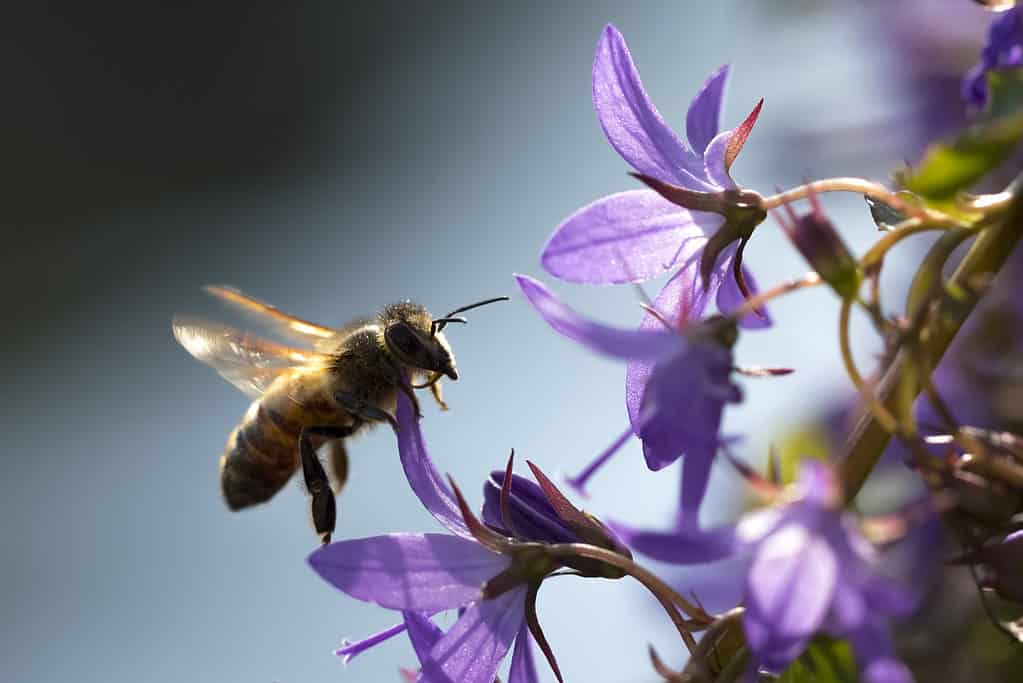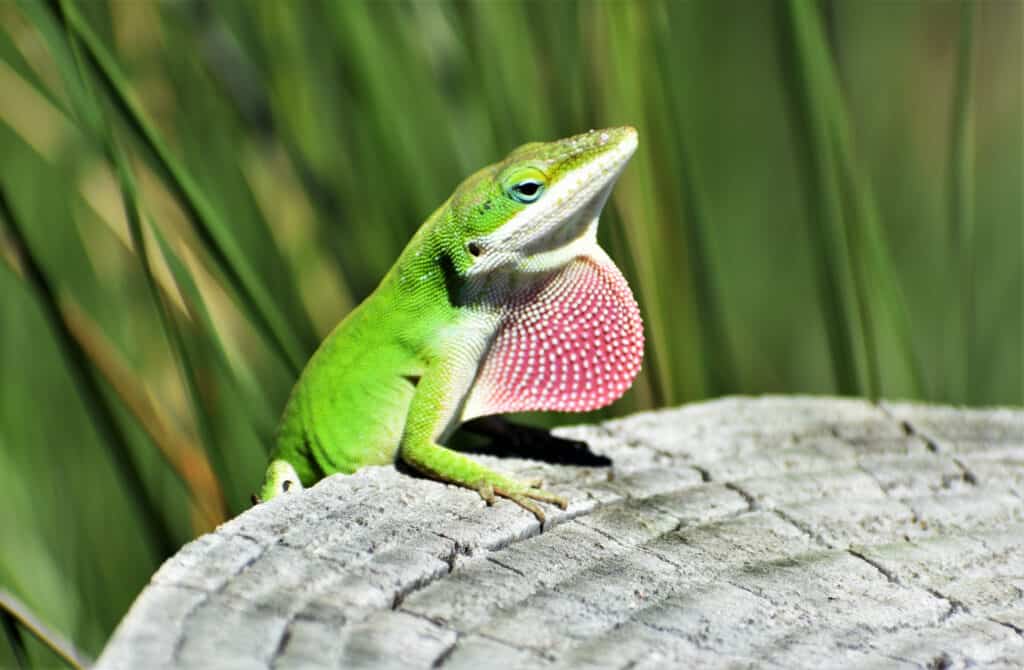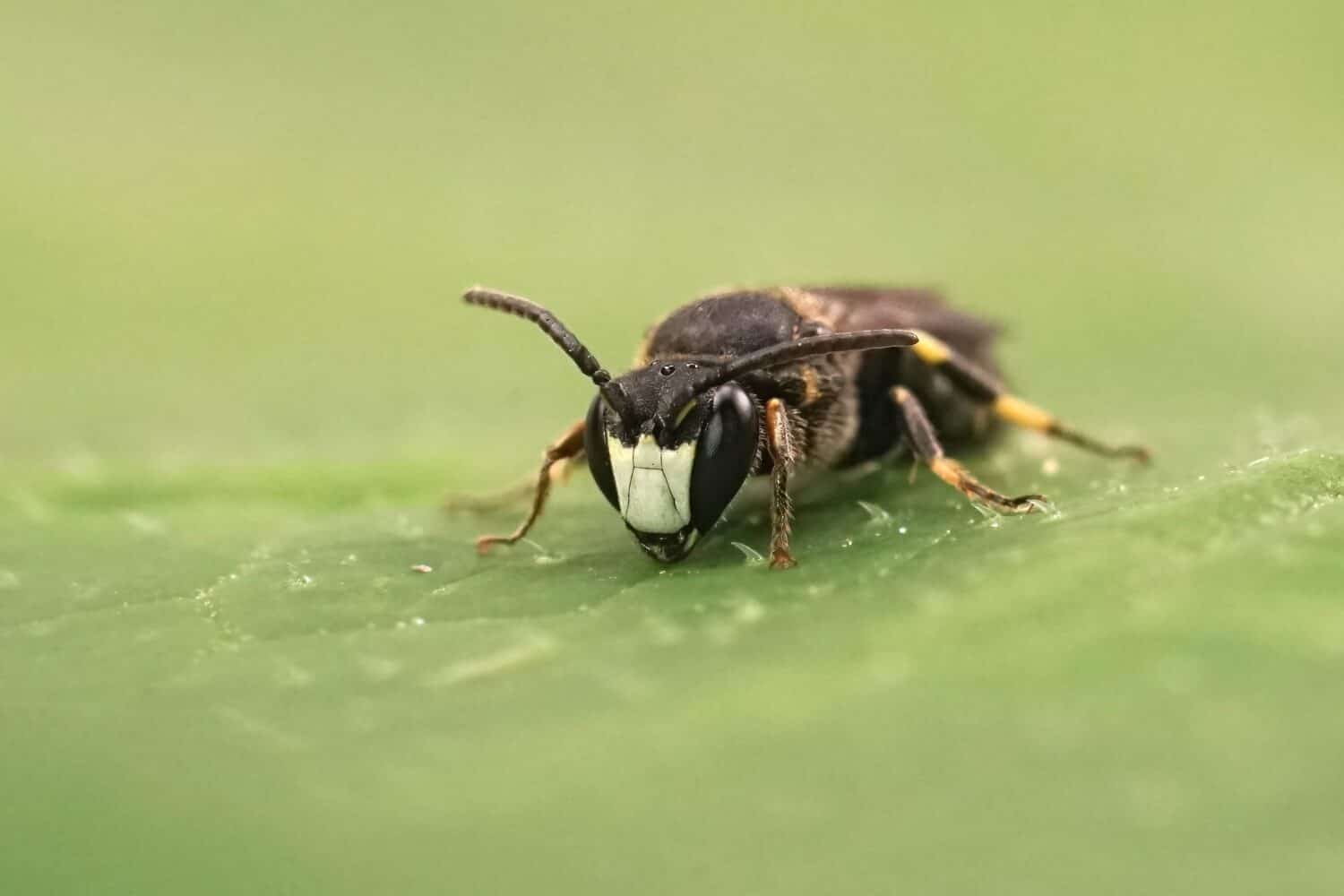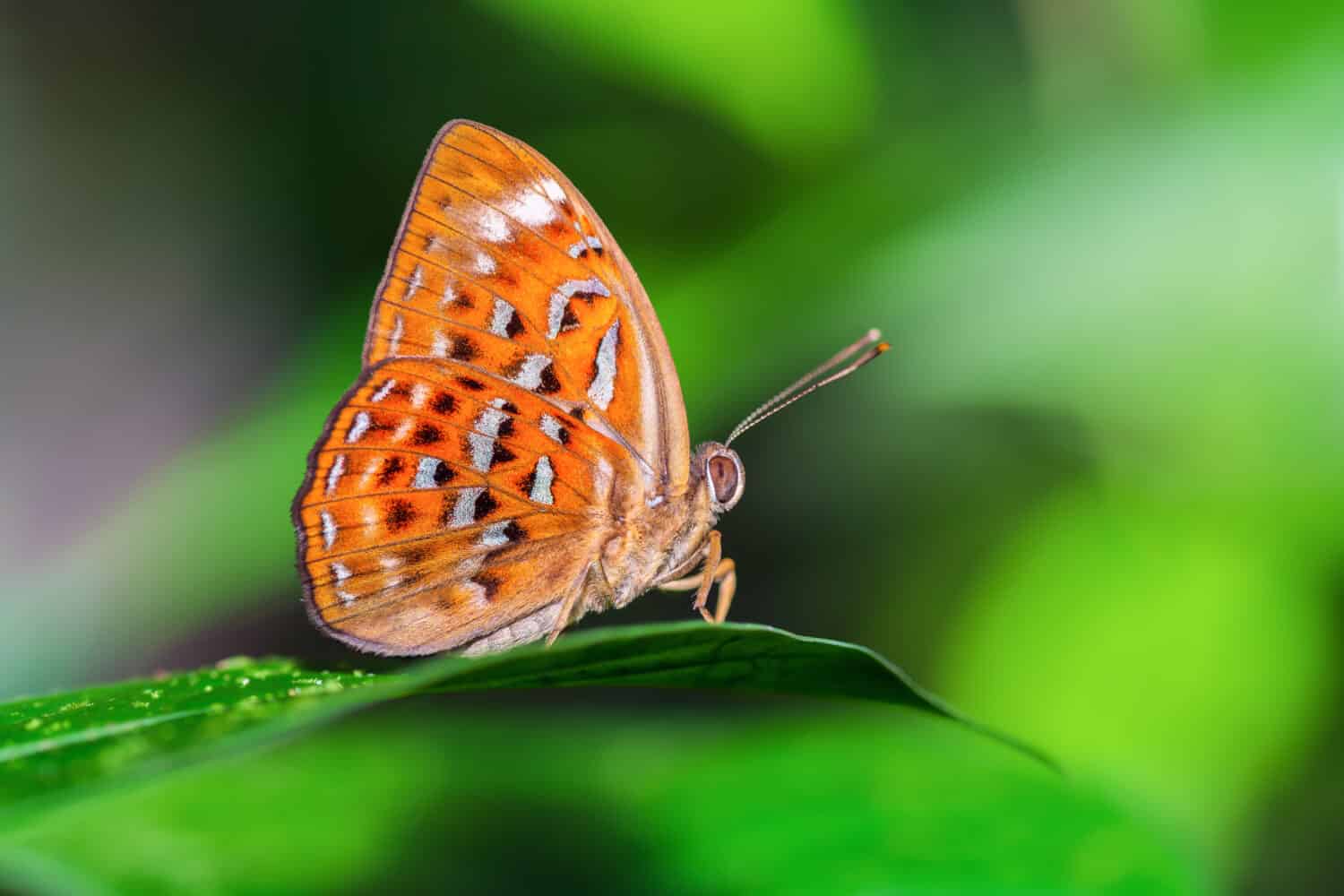It’s a given that the United States is home to millions of insect species, all of which are critical in maintaining our ecosystems. However, many insect populations are declining at an alarming rate. This decline threatens the entire ecosystem and us humans who depend on it.
Endangered insect populations vary from state to state, and understanding which species are at risk is crucial to implementing effective conservation strategies.
In this article, we’ll shed light on the current state of endangered insect populations across the United States. We’ll examine the available data and research to understand better which states need conservation efforts the most.
Endangered Or Threatened: How Are They Different?
The Endangered Species Act (ESA) categorizes plant and animal species as either “endangered” or “threatened.” “Endangered” indicates that a species is at risk of extinction in all or a significant part of its habitat. Meanwhile, “threatened” denotes that a species will soon become endangered.
Different states have their own laws that are similar to the ESA. Therefore, a species can have varying statuses of being threatened or endangered, depending on whether it’s at the federal or state level. The United States Geological Survey (USGS) usually uses the federal status unless it’s specified otherwise.
It’s also important to note that the terms “at risk” or “imperiled” don’t have legal significance under the ESA. They refer to plants and animals that are dwindling in number and may be close to becoming extinct. Species with small populations not yet protected by the ESA can use these terms.

Pollinators are endangered insects, and yet the U.S. Natural Resources Conservation Service reports that
about 35% of the world’s food crops
rely on pollinators.
©SanderMeertinsPhotography/Shutterstock.com
Factors Endangering Insects In the Wild
No one factor is to blame entirely, but five main drivers, including habitat loss, climate change, diseases and microorganisms, pollution, and non-native species, link to the decline of insect populations.
Habitat Loss
Deforestation, urbanization, and land-use changes are some of the activities that lead to habitat loss. As natural habitats disappear, insects lose their homes and food sources, thus a cascading effect on the entire ecosystem.
Climate Change
Rising temperatures and changing precipitation patterns can alter the timing of life cycle events, such as breeding and migration, leading to mismatches in food availability and other resources. Climate change can overwhelm ecosystems, making them unable to cope with extreme events like wildfires, droughts, and floods. Obviously, this can have harmful effects on insect populations.
Pollution
When toxic chemicals are released into the environment, they can harm insects and other living organisms. Insects can absorb and accumulate these toxins and then pass them on to predators higher up in the food chain.
Diseases and Microorganisms
Diseases and microorganisms can wipe out entire populations of insects, as they are vulnerable to these threats. Bacteria, viruses, fungi, and parasites are the leading causes of such diseases. Some insects are more susceptible to these diseases than others, and the spread of these diseases can have devastating impacts on their populations.
Non-Native Species
Introducing non-native species into an ecosystem can trigger intense competition for food and habitat, giving them an advantage over native species. As a result, native insect populations may decline, causing a ripple effect throughout the ecosystem. Furthermore, non-native species may also introduce new diseases and parasites which native insects may not have the ability to combat.
Why Should We Protect Insects?
Although many insects are often considered nuisances, they benefit other organisms in our ecosystem. In reality, the survival of the majority of life on our planet, including humans, depends heavily on a varied array of insect species. They provide vital services to animals such as freshwater fishes, birds, and even humans.
Insects play a critical role in the food chain, just like plants. Many plants and animals we consume depend on insects to survive as pollinators or food sources. For instance, almost all songbirds feed their offspring with insects, which form the largest portion of their diet.
Insects also provide valuable services, which include:
Pollinators and Food Sources
The U.S. Natural Resources Conservation Service reports that about 35% of the world’s food crops rely on pollinators for reproduction. This means that one out of every three bites of food you consume is made possible by the work of a pollinator. Moreover, certain insects are natural predators of pests that could damage crops used for food.
Natural Predators and Decomposers
Certain insects, including beetles, flies, and termites, are particularly effective decomposers. These insects are critical in breaking down dead plant and animal matter, helping release nutrients into the soil.
For example, beetles are essential decomposers of woody plant material, such as fallen branches and tree trunks. Flies are important decomposers of animal matter, such as dead insects, birds, and mammals. Termites are particularly adept at breaking down woody material, and their digestive systems contain microorganisms that can break down tough cellulose fibers.
In addition, decomposers play a crucial role in maintaining soil health by releasing nutrients and removing dead and decaying organic matter. This helps control the spread of disease, which is particularly important in agricultural settings where too much organic matter can lead to disease outbreaks and lower crop yields.
Vital Source of Nutrition for Wildlife
Many animals, such as birds, amphibians, and reptiles, need insects as a critical food source. Birds rely heavily on insects, and some species only feed their young with insects. The American Robin eats earthworms, beetles, and caterpillars, while the Eastern Bluebird eats grasshoppers, crickets, and beetles. The Green Anole lizard mostly eats insects, such as crickets and moths.

Green anoles rely on insects like crickets and moths for their food intake.
©victoria.schell/Shutterstock.com
Insects for Practical and Scientific Purposes
In addition to their tangible resources, insects are essential for providing us with honey, dyes, and silk. Insects are also crucial for scientific research because of their unique properties. They are especially useful for studying genetics and developmental biology.
For instance, scientists often use the fruit fly as a model organism in genetic research because it has a short lifespan, reproduces quickly, and its genetics are well-understood. Certain species of insects are also studied for their potential to produce antimicrobial compounds and other therapeutic agents in medical research.
Endangered Insect Populations across Different U.S. States
Here is a list of every endangered insect in the U.S., listed by state:
Note that this report only includes species with a Spatial Current Range in ECOS. It leaves out species without this attribute, which may result in lower state totals. Therefore, the report’s overall figures may not fully reflect the total number of listed species.
Alabama: 1
Alabama has only one listed species: Mitchell’s satyr butterfly.
Alaska: 0
Alaska doesn’t have any listed species. Alaska’s harsh and cold climate could be the reason for the limited insect diversity.
American Samoa: 0
American Samoa also has no listed endangered insect species.
Arizona: 0
Arizona has no listed endangered insect species.
Arkansas: 0
Arkansas also has no listed endangered insect population.
California: 19
With 19 listed endangered insect species, California ranks second highest in the United States. This is understandable because the state is geographically extensive and has varied habitats. The endangered insect species found in California are:
- Behren’s silverspot butterfly
- Callippe silverspot butterfly
- Carson wandering skipper
- Casey’s June Beetle
- Delhi Sands flower-loving fly
- El Segundo blue butterfly
- Franklin’s bumble bee
- Laguna Mountains skipper
- Lange’s metalmark butterfly
- Lotis blue butterfly
- Mission blue butterfly
- Mount Hermon June beetle
- Myrtle’s silverspot butterfly
- Ohlone tiger beetle
- Palos Verdes blue butterfly
- Quino checkerspot butterfly
- San Bruno elfin butterfly
- Smith’s blue butterfly
- Zayante band-winged grasshopper
Colorado: 1
The Uncompahgre fritillary butterfly is the only species listed as endangered in Colorado. The listing occurred on June 24, 1991.
Connecticut: 0
There is none in Connecticut.
Delaware: 0
There are no endangered insects in Delaware
District of Columbia: 0
District of Columbia has three endangered species, and none are insects.
Florida: 4
Florida has four endangered insect species. Some examples of these endangered insects are:
- Miami blue butterfly
- Florida leafwing
- Schaus swallowtail butterfly
- Miami tiger beetle
Georgia: 0
Georgia has no endangered insect species.
Guam: 2
Guam, a U.S. territory in the western Pacific Ocean, has two types of endangered insects. According to ECOS, these include the Mariana eight-spot butterfly and Mariana wandering butterfly.
Hawaii: 27
Hawaii is home to the highest number of endangered insect species in the United States, with 27 listings. These include:
- Anthricinan yellow-faced bee
- Assimulans yellow-faced bee
- Blackburn’s sphinx moth
- Blackline Hawaiian damselfly
- Crimson Hawaiian damselfly
- Easy yellow-faced bee
- Flying earwig Hawaiian damselfly
- Hawaiian picture-wing fly (Drosophila aglaia)
- Hawaiian picture-wing fly (Drosophila heteroneura)
- Hawaiian picture-wing fly (Drosophila montgomeryi)
- Hawaiian picture-wing fly (Drosophila musaphilia)
- Hawaiian picture-wing fly (Drosophila neoclavisetae)
- Hawaiian picture-wing fly (Drosophila obatai)
- Hawaiian picture-wing fly (Drosophila substenoptera)
- Hawaiian picture-wing fly (Drosophila tarphytrichia)
- Hawaiian picture-wing fly (Drosophila hemipeza)
- Hawaiian picture-wing fly (Drosophila ochrobasis)
- Hawaiian picture-wing fly (Drosophila differens)
- Hawaiian picture-wing fly(Drosophila digressa)
- Hawaiian picture-wing fly (Drosophila sharpi)
- Hawaiian yellow-faced bee (Hylaeus longiceps)
- Hawaiian yellow-faced bee (Hylaeus mana)
- Hawaiian yellow-faced bee (Hylaeus kuakea)
- Hilaris yellow-faced bee
- Oceanic Hawaiian damselfly
- Orangeblack Hawaiian damselfly
- Pacific Hawaiian damselfly

The yellow-face bee is an endangered insect in Hawaii.
©HWall/Shutterstock.com
Idaho: 0
Idaho has no endangered insect population.
Illinois: 3
Illinois has three listed species: the Hine’s emerald dragonfly, Karner blue butterfly, and the Rusty patched bumble bee.
Indiana: 3
Indiana has three species listings: the Karner blue butterfly, Mitchell’s satyr Butterfly, and Rusty patched bumble bee.
Iowa: 1
The only endangered species in Iowa is the Rusty patched bumble bee.
Kansas: 0
Kansas has no endangered insect species.
Kentucky: 0
There are no listed endangered insect species in Kentucky.
Louisiana: 0
Louisiana doesn’t have any endangered insect species listed.
Maine: 1
Maine has one listed endangered species, the Rusty patched bumble bee.
Maryland: 2
Maryland is home to two endangered insect species, the Northeastern beach tiger beetle and the Puritan tiger beetle.
Massachusetts: 1
Massachusetts has one endangered insect species – Rusty patched bumble bee
Michigan: 5
Michigan has five endangered insect species. These include;
- Hungerford’s crawling water Beetle
- Mitchell’s satyr Butterfly
- Poweshiek skipperling
- Hine’s emerald dragonfly
- Karner blue butterfly
Minnesota: 2
Minnesota is home to two endangered insect species – the Karner blue butterfly and the Rusty patched bumble bee.
Mississippi: 1
Mississippi has one endangered insect species, which is Mitchell’s satyr Butterfly
Missouri: 1
Missouri has one endangered insect species, the Hine’s emerald dragonfly.
Montana: 0
Montana has no endangered insect species.
Nebraska: 1
The only endangered species in Nebraska is the Salt Creek tiger beetle (Cicindela nevadica lincolniana), a fast-running predator that lives in saline wetlands.
Nevada: 2
Nevada has two species that are listed as endangered. The Mount Charleston blue butterfly, which inhabits meadows at high elevations near Las Vegas, is one of them. Another species in danger is the Carson wandering skipper. This butterfly is found in areas with sagebrush and is at risk of disappearing from its habitat.
New Hampshire: 1
New Hampshire lists only one endangered species – the Karner blue butterfly. This butterfly needs wild lupine plants to survive during its caterpillar stage. Without these plants, the Karner blue butterfly is at risk of extinction.
New Jersey: 0
No insect species in New Jersey are at risk of becoming endangered.
New Mexico: 1
The Sacramento Mountains checkerspot butterfly is the only species listed as endangered in New Mexico. This butterfly lives in meadows located at high elevations.
New York: 1
The Karner blue butterfly is the only insect species at risk of extinction in New York.
North Carolina: 1
The Saint Francis’ satyr butterfly is the only species listed as endangered in North Carolina. The butterfly inhabits open wetlands covered in grass.
North Dakota: 0
North Dakota has no insect species currently at risk of extinction.
Northern Mariana Island: 3
There are three species listed in the Northern Mariana Islands. These include the Mariana eight-spot butterfly, Mariana wandering butterfly, and Rota blue damselfly.
Ohio: 3
Three insect species in Ohio are considered endangered: the Karner blue butterfly, Mitchell’s satyr butterfly, and rusty patched bumble bee.
Oklahoma: 0
There are no endangered insect species found in Oklahoma.
Oregon: 0
Oregon has no endangered insect species.
Outlying Caribbean Islands: 0
The ECOS database contains no endangered insect species in the Outlying Caribbean Islands.
Outlying Pacific Islands: 0
The Outlying Caribbean Islands also don’t have any species listed as endangered in the ECOS database.
Pennsylvania: 0
Pennsylvania does not have any endangered insect species.
Puerto Rico: 1
The Puerto Rican harlequin butterfly is the only endangered insect species in Puerto Rico.

The harlequin butterfly is an endangered insect in Puerto Rico.
©Narupon Nimpaiboon/Shutterstock.com
Rhode Island
Rhode Island doesn’t have any endangered insect species.
South Carolina: 0
South Carolina doesn’t have any endangered species.
South Dakota: 0
South Dakota doesn’t have any endangered insect species.
Tennessee: 0
There is no endangered insect population in Tennessee.
Texas: 8
Texas has eight insect species that are listed as endangered. These include:
- Rhadine infernalis
- Rhadine exilis
- Coffin Cave mold beetle
- Comal Springs dryopid beetle
- Comal Springs riffle beetle
- Helotes mold beetle
- Kretschmarr Cave mold beetle
- Tooth Cave ground beetle
Utah: 0
Utah doesn’t have any endangered insect species.
Vermont: 0
Vermont has no endangered insect species.
Virgin Islands: 0
Virginia Island also doesn’t have endangered insect species.
Virginia: 2
In Virginia, there are two insect species listed as endangered. These include Mitchell’s satyr Butterfly and the Rusty patched bumble bee.
Washington: 2
Washington State has identified two endangered insect species: the Island marble Butterfly and Taylor’s checkerspot.
West Virginia: 1
The Rusty patched bumble bee is the only insect species in West Virginia considered endangered.
Wisconsin: 4
Wisconsin has four insect species with a Spatial Current Range listed as endangered, including:
- Hine’s emerald dragonfly
- Hine’s emerald dragonfly
- Poweshiek skipperling
- Rusty patched bumble bee
Wyoming: 0
Currently, no insect species in Wyoming face endangerment.
Saving Endangered Species: Why Continuous Research is Key
Although certain states have more threatened insect species than others, it’s crucial to recognize that the report’s data may be incomplete. This highlights the need for continuous research and conservation endeavors to protect these vital species and the ecosystems they depend on.
The photo featured at the top of this post is © Wirestock Creators/Shutterstock.com
Thank you for reading! Have some feedback for us? Contact the AZ Animals editorial team.







